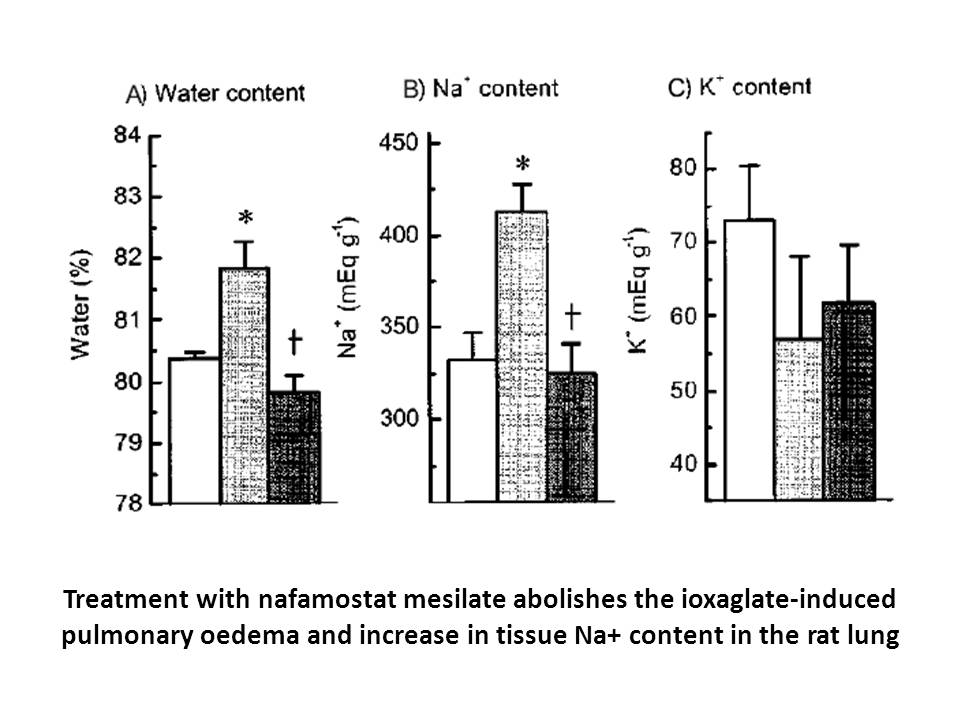Archives
The first rationally designed dual
The first rationally designed dual mPGES-1/5-LO inhibitor was reported in 2008 and represents a structural derivative of pirinixic Actinonin sale - a synthetic agonist of PPARα with lipid-lowering properties (Koeberle et al., 2008b). Further α-alkyl- and α-aryl-substituted derivatives have been synthesized and pre-clinically evaluated (Hieke et al., 2011; Koeberle et al., 2010) yielding a 2-aminothiazole derivate of pirinixic acid, as most advanced candidate that comparably inhibits 5-LO and mPGES-1 at submicromolar concentrations (Hanke et al., 2013). This compound efficiently reduced PGE2 and LT levels in an animal mo del of acute inflammation (zymosan-induced peritonitis in mice) without repressing the formation of the COX-derived product 6-keto PGF1α. Moreover, the structurally related derivative YS121 (Koeberle et al., 2008b, Koeberle et al., 2010) was recently shown to decrease pancreatic intraepithelial neoplasia lesions and tumor growth in KrasG12D mice that were deficient of natural killer T cells (Janakiram et al., 2017). Other structural series of dual mPGES-1/5-LO inhibitors include non-acidic benzo[g]indole-3-carboxylates (Koeberle et al., 2009b), benzo[d]isothiazole-1,1-dioxides (Shang et al., 2014) and synthetic derivatives of natural products, i.e., myrtucommulones (Wiechmann et al., 2015b), curcuminoids (Koeberle et al., 2014) and benzoquinones (Filosa et al., 2015). Very recently, the 4,5-diaryloxazol-3-carboxylate BRP-187 was described to inhibit FLAP and mPGES-1 (Garscha et al., 2016). In contrast to licofelone and the structurally related sulfanylaryl pyrazoles (Liedtke et al., 2009), BRP-187 represents an unbalanced dual inhibitor with high potency for inhibition of cell-based LT biosynthesis (IC50 = 7–60 nM) (Garscha et al., 2016).
Taken together, dual inhibitors of mPGES-1 and 5-LO are innovative anti-inflammatory drug candidates that might combine an exceptional safety profile with superior efficacy over single-target inhibitors (Koeberle et al., 2016; Samuelsson et al., 2007).
del of acute inflammation (zymosan-induced peritonitis in mice) without repressing the formation of the COX-derived product 6-keto PGF1α. Moreover, the structurally related derivative YS121 (Koeberle et al., 2008b, Koeberle et al., 2010) was recently shown to decrease pancreatic intraepithelial neoplasia lesions and tumor growth in KrasG12D mice that were deficient of natural killer T cells (Janakiram et al., 2017). Other structural series of dual mPGES-1/5-LO inhibitors include non-acidic benzo[g]indole-3-carboxylates (Koeberle et al., 2009b), benzo[d]isothiazole-1,1-dioxides (Shang et al., 2014) and synthetic derivatives of natural products, i.e., myrtucommulones (Wiechmann et al., 2015b), curcuminoids (Koeberle et al., 2014) and benzoquinones (Filosa et al., 2015). Very recently, the 4,5-diaryloxazol-3-carboxylate BRP-187 was described to inhibit FLAP and mPGES-1 (Garscha et al., 2016). In contrast to licofelone and the structurally related sulfanylaryl pyrazoles (Liedtke et al., 2009), BRP-187 represents an unbalanced dual inhibitor with high potency for inhibition of cell-based LT biosynthesis (IC50 = 7–60 nM) (Garscha et al., 2016).
Taken together, dual inhibitors of mPGES-1 and 5-LO are innovative anti-inflammatory drug candidates that might combine an exceptional safety profile with superior efficacy over single-target inhibitors (Koeberle et al., 2016; Samuelsson et al., 2007).
Natural products as dual mPGES-1/5-LO inhibitors
Suppression of inflammation is among the most common pharmacological actions reported for natural products, particularly for those from plant origin. For many of these compounds, interference with the biosynthesis of pro-inflammatory PGs and LTs is proposed as potential underlying mode of action (Koeberle and Werz, 2014). Thus, early studies in the 1980's and 1990's addressed inhibition of eicosanoid formation by these natural products in cell-based assays, and effective agents were then anticipated as inhibitors of the LO and/or COX pathway, even though direct interference with the key enzymes (i.e., cPLA2, 5-LO, LTA4 hydrolase or LTC4 synthase, COX-1/2, PG synthases) was often not readily investigated (Werz, 2007). It should be pointed out that in such cell-based assays the interaction with several eicosanoid biosynthetic enzymes and proteins, agonist receptors and signaling molecules as well as other phenomena (e.g., cytotoxicity, membrane phospholipid modulation, etc.) may result in inhibition of PG and/or LT formation. Moreover, many natural products were found to inhibit the expression of inducible eicosanoid biosynthetic enzymes, such as COX-2 or mPGES-1, for example by blockade of the NF-κB pathway (Koeberle and Werz, 2014). Hence, cell-free assays that reveal the direct interaction between the natural product and the target protein, are of major importance. This crucial aspect is in particular relevant for the identification of mPGES-1 inhibitors, as reported in 6.1 Acylphloroglucinols, 6.2 Phenolic compounds, 6.3 Non-phenolic acidic structures. Thus, for designation of a natural product as dual mPGES-1/5-LO inhibitors, the proof of direct interaction in cell-free test systems should be considered as indispensable criterion. Intriguingly, most of the natural products that inhibit mPGES-1 are active also against 5-LO.